Amid usual theatrics, Bill Nye the Science Guy tries to get serious about climate change
- Oops!Something went wrong.Please try again later.
- Oops!Something went wrong.Please try again later.
In his latest television series, "The End is Nye," Bill Nye the Science Guy sets out to offer a "scientific blueprint" for surviving the "most epic disasters imaginable."
The Peacock original series, which the network classified as "PG" and in the "fear" genre, aired six episodes in 2022 outlining plausible-but-extreme threats for earthlings from hurricanes, supervolcanoes, solar flares, apocalyptic dust storms, comet collisions and earthquakes that cause tsunamis.
Near the beginning of episode 4, Nye takes an ominous escalator suspended in darkness into what appears to be a fiery, Transformer-style metal sphere that pops him out into a sunny Midwest cornfield. There, he introduces the idea of drought, rising temperatures and dust storms undermining the crops we rely on to feed humanity.
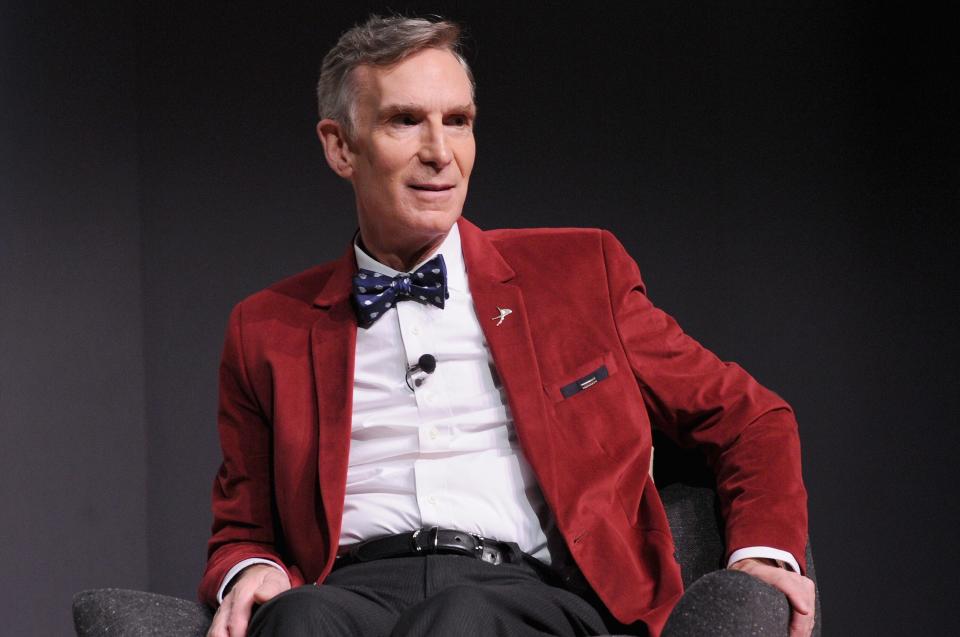
"The grains here nourish people everywhere," Nye says on screen while dressed like an Iowa farmer, plus his signature bow tie. "And what nourishes the grains? Mountain Dew Code Red. No, I'm kidding. The grains are nourished by the sun, the soil and the water. And water is precisely where the trouble starts."
Last week, Nye brought his beloved brand of nerdy humor to Tempe, where he didn't have to convince anyone that water availability is a problem. He does still field questions, he told the audience at Tempe Center for the Arts on March 12th, from people wondering if maybe the Earth really is flat.
And he is concerned that people don't fully understand climate change is not a joke.
'It's not flat. We've done tests'
Nye's visit to Arizona, as the invited speaker for this year's Rhodes lecture presented by Arizona State University's Barrett Honors College, was all about bringing attention, in a humorous way, to the very real threat of climate change. It's a tough mark to hit. But he's been at this for years.
One of America's most beloved and trusted science ambassadors, especially for Millennials who grew up watching him demonstrate astounding features of static electricity, magnetism and the human eye in his televised laboratory (and for my middle school biology teacher who told us all he was her crush), Nye's word carries weight when he declares truths like "(The Earth's) not flat. We've done tests," as he reassured fans in Tempe. Now he's decided climate change is the issue that needs that weight.
Climate accountability: Phoenix touts climate awareness, but hasn't addressed methane levels at city-owned site
It's a fine science communication line he's walking. With his comedic onstage presence and background in disaster drama, attendees could be forgiven for not fully taking every one of his warnings seriously.
But unlike the catastrophized choreographies about global cataclysms in "The End is Nye," the deadly threat of climate change is already here, if not always camera-ready. (See my discussion with representatives from the Council on Foreign Relations last August about the challenge of visually capturing heat and its impacts in Phoenix.)
That might be why in Tempe — after making a joke about the floor being lava on uninhabitable planets like Venus and leaping onto a nearby chair for safety before proclaiming the chair would technically also incinerate in those conditions — Nye promptly put up a slide of the "hockey stick graph" plotting data on how quickly Earth's average temperature has spiked in recent decades compared to records over hundreds of years before human industrialization. (Yes, the climate naturally cycles through temperature extremes, but not so drastically during any other point in the history of human habitation.)
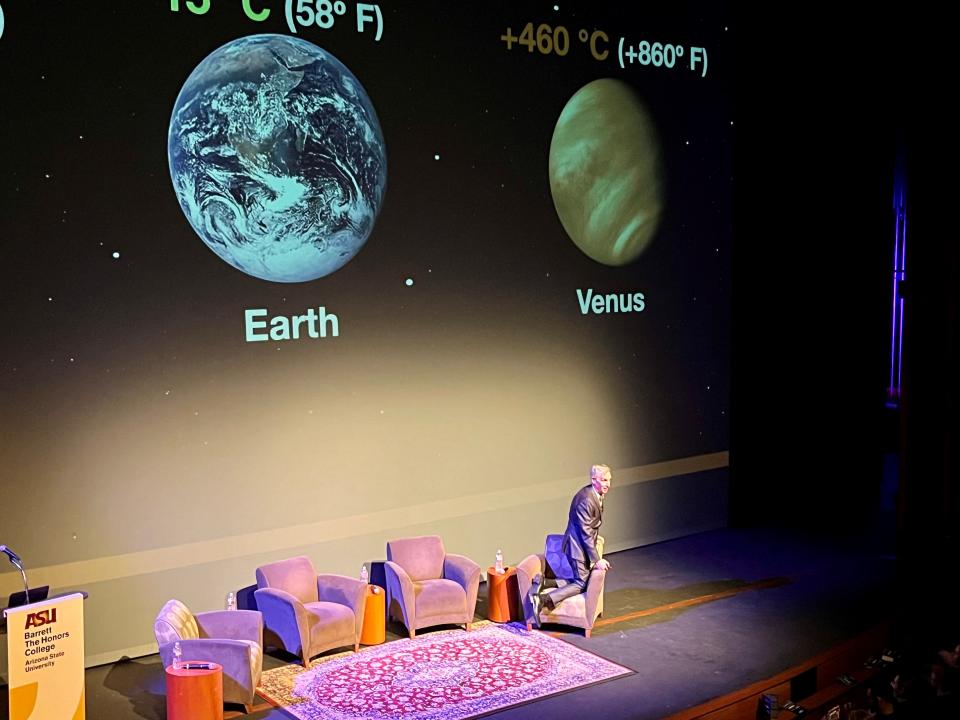
"So there you have it, you guys," Nye said in Tempe. "We have a very thin atmosphere and 8 billion of us now breathing and burning it."
He then clicked to a slide showing documents from oil company researchers who, by 1978, had determined that the continued burning of fossil fuels for energy could eventually create a climate hostile to human life. At this point, his facial expression turned deadly serious, which from a comedian is perhaps the truest manifestation of the "fear" genre.
"People at Exxon saw this 50 years ago and they've done nothing about it and it makes me crazy," Nye said before suggesting he'll need to discuss this with his therapist, Arnold Swarzenegger.
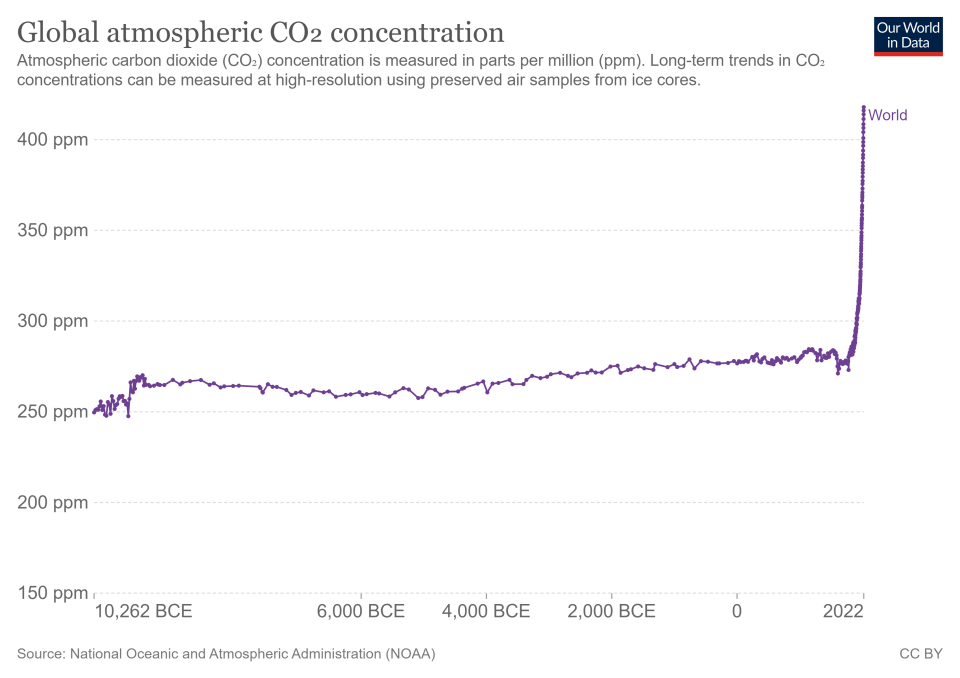
To protect their financial interests, instead of acting responsibly with this information, fossil fuel companies launched massive, now well-documented, advertising and misinformation campaigns to discredit even their own scientists and convince Americans that climate change was a hoax, then later not a big deal, then that they're working on it.
Meanwhile, well-connected oil executives made sure the political climate allowed them continued access to drilling across public lands, which Nye pointed out is much easier to get permits for still than for alternatives like accessing geothermal resources or installing renewables that could provide energy in much less destructive ways.
"If we could get wind and solar in the same places where we've been drilling for oil, and if we could get (geothermal) heat out of the ground in the same places where we drill for oil, we could, dare I say it, change the world!" Nye exclaimed, invoking nostalgia among the crowd by emphasizing the ending phrase in his characteristic way.
Fossil fuel industry misinformation: Climate change is not your fault, but that doesn't mean you're off the hook
After about 45 minutes of solo stage time, during which Nye also imitated the sound of space lasers while discussing possible solutions, then admitted that, technically, lasers in space would be soundless, then recommended everyone make time to see the total eclipse set to be viewable from San Antonio April 8, America's favorite science ambassador called on the audience to "use our intellect and treasure to address climate change," by demanding a societal shift away from fossil fuels.
"This is, to me, all very doable, but it means people working together," Nye concluded.
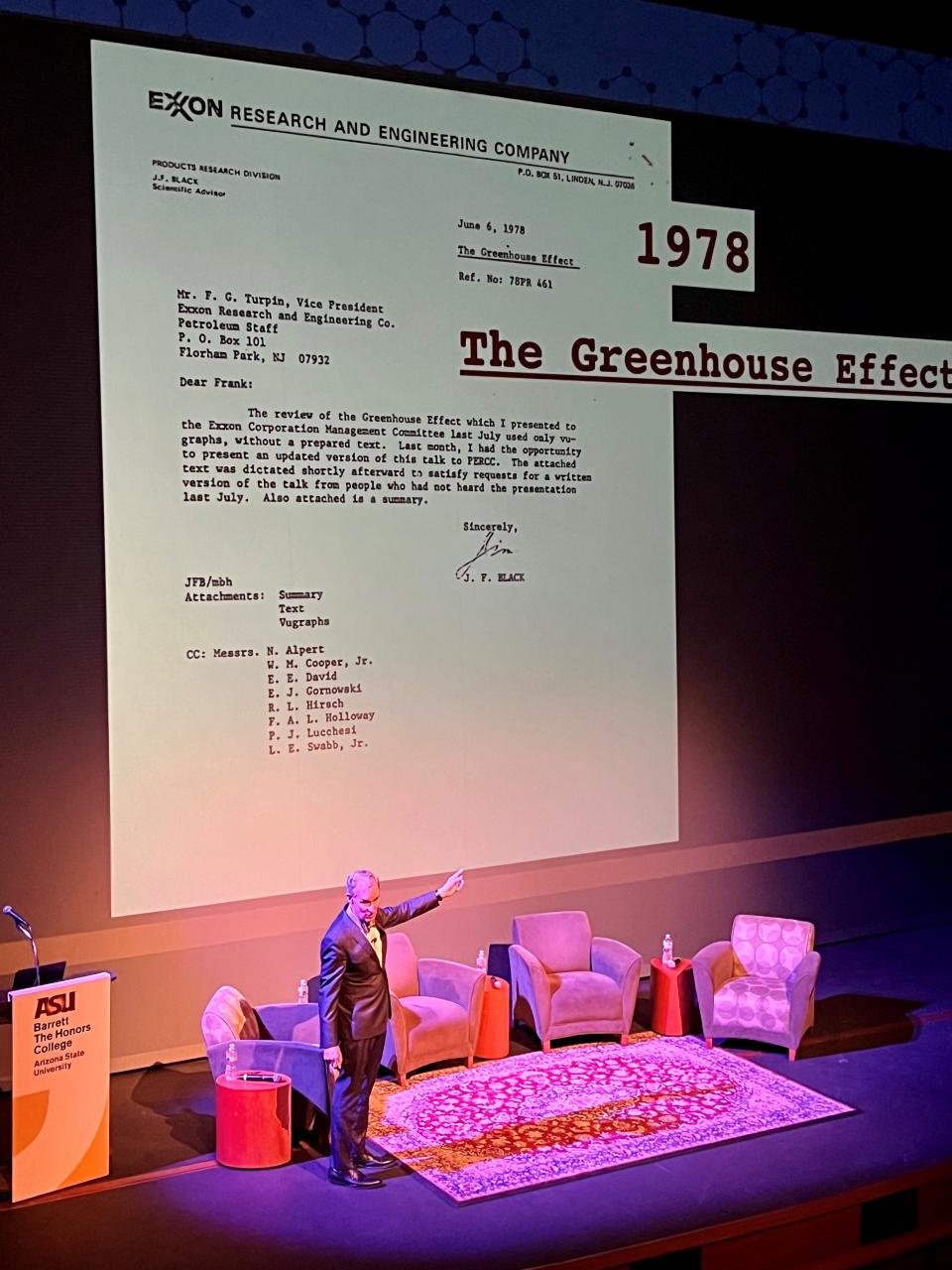
Catastrophic thinking in service of humanity, on the big screen?
Toward the end of the event in Tempe, Nye was joined on stage by Amber Wutich, who directs ASU's Center for Global Health and Stephen Roe Lewis, the governor of the Gila River Indian Community, for a panel discussion about climate change and water rights moderated by Barrett Honors College Dean Tara Williams.
Wutich introduced herself as on a "mission to put my catastrophic thinking in service of humanity" and Lewis remarked that "we find ourselves in a very critical time" before talking about the history of Indigenous people making life in the Salt River Valley possible by constructing elaborate canals to transport water to settlements.
The ensuing conversation ended with Nye reinforcing the benefits of critical thinking, of science education and of working together for mutual ensured preservation.
"We are all one species. We are all much more alike than we are different. This is science. This is evolutionary biology," Nye said. "We should be able to find common ground and common water supplies and get things done. This misapprehension of science that is so rapid now is affecting our laws and it's crazy. But science education is the key to saving the world. Science, yes."
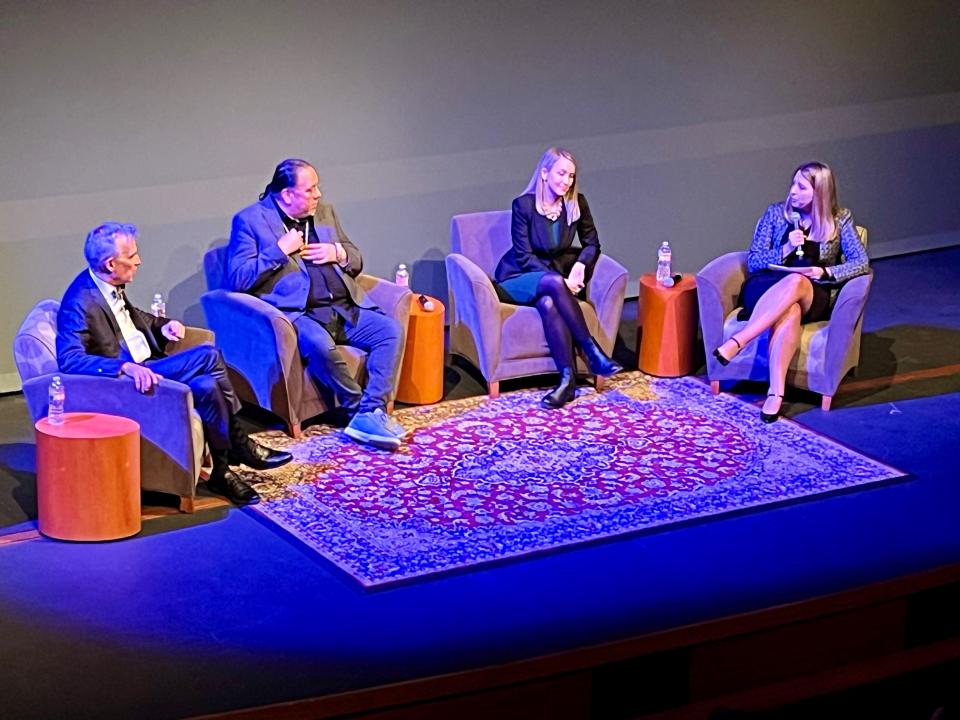
For viewers of Nye's recent disaster television series, however, the key to preventing the misapprehension of science or actual disaster risk may be hard to find. In his episode on dust storms, Nye educates about real forecasted impacts of climate-caused drought on crops similar to those already experienced during the Dust Bowl of the 1930s.
But he does so while taking shelter in a rickety coffee shop from a giant, raging dust tornado poised to consume Chicago and end availability of the Windy City's legendary hot dogs, on a program categorized as "Fear" TV.
"When drought dries up the land and turns soil into dirt, that wind becomes the weaponizing force that creates vast, unstoppable storms of dust," Nye shouts on screen above the din of disaster dust. "Rising temperatures caused by climate change, severe drought and dwindling water supplies are all out of control. If we don't work to conserve our water, protect the soil from over-farming and slow climate warming, we could be facing an environmental disaster like the infamous Dust Bowl of the 1930s, or worse."
Extreme weather science: Judging extremes: ASU climatologist traces trajectory of weather records in new book
What Nye calls a modern "apocalypse right here on American soil" that threatens to reenact real conditions that inspired gloomy novels like John Steinbeck's "The Grapes of Wrath" is accompanied by theatrical images of "Wizard of Oz"-like tornadoes and sandblasted men in suits blinking into the haze as if in a zombie movie while children cower behind a dusty woman in an abandoned building.
"At this point, you might be thinking 'Bill, please, the Great Plains becoming a desert, Chicago buried in dust, no more hot dogs ever,'" he continues in the episode.
"Today, history is repeating itself, and this time it's going to get even worse. End-of-the-world worse. Would you like to know what happens next?" Nye asks of his rapt coffee shop compatriots, some of whom nod and others who, relatably, shake their heads.
"The Great Plains are stripped bare by the relentless dust storms" Nye forecasts. "The U.S. heartland eventually withers and the nation is forced to look elsewhere to feed itself. Nearly 100 million people migrate away from the growing dust storms. Tensions run high as food runs short and hundreds of thousands of people starve to death."
Shortly after this speech, the coffee shop Nye is sitting in collapses under the force of the dust tornadoes taking over Chicago. The screen goes dark and suddenly Nye is back on his escalator, descending away from the fiery Transformer globe, safe from these outlandish scenarios.
It's good television, full of tense drama and special effects. But the thing is, most of it is not far off from what teams of scientists have recently estimated is possible, especially in the American Southwest, as climate change functions to make dry areas of the world drier and wet areas wetter.
For me, the "fear" is in being unsure whether people know which aspects to worry about or fully understand there is no magic escalator to whisk us away from this scene.
Read our climate series: The latest from Joan Meiners at azcentral, a column on climate change
Just ahead of the fifth National Climate Assessment report's release last November, ASU professor Dave White, who led the chapter about impacts in the Southwest, talked to me about data-based, Dust Bowl-like predictions.
"We document how increasing challenges are confronting food and fiber production in the Southwest," White said. "This climate impact signal is translated through drought and water scarcity, making it more difficult to raise food and fiber in the region. And we also document how extreme heat is increasing animal stress and reducing crop quality and yield."
People on the move as a result of changing environmental conditions is also a Dust Bowl era reality that is happening again now. Climate migration describes a worldwide pattern of people relocating after climate-worsened storms or crop failures, sometimes only to encounter new climate threats like heat waves elsewhere. Matthew Hauer, a researcher at Florida State University, recently told me he estimates that sea level rise will motivate around 100,000 Americans to leave flooding coastlines for the Phoenix-Mesa-Scottsdale area by 2100.
Health analogies are real, too. Witnesses to the 1930s Dust Bowl suffered from an ailment called "dust pneumonia." Today in Arizona, we have rising rates of Valley Fever, a lung disease transmitted by a fungus carried in blowing dust that stands to become more prevalent as long-term water shortages continue to plague the region.
After seeing Bill Nye's powerful ability to capture the attention of an audience, both on stage in Tempe and in these television programs, I can't help but wonder what my (excellent) middle school biology teacher would say about the dust apocalypse scene.
I also wonder how the folks behind the "Climate Reality Check" index for scoring movies based on their mention of climate key words, a Bechdel-Wallace test idea L.A. Times climate columnist Sammy Roth wrote about recently, would view it. Is it enough to just get the concepts out there? Or do science communicators also have an obligation to clearly delineate drama and reality?
Are modern Americans aware and motivated enough to choose science over fossil fuel propaganda, distinguish between fact and "fear" and not, as Nye says, let history repeat itself? If anyone can usher us into a safer, more prepared future through education, this Millennial believes maybe the Science Guy can. But — serious face — the dark escalator ahead is no joke.
Joan Meiners is the climate news and storytelling reporter at The Arizona Republic and azcentral.com. Before becoming a journalist, she completed a doctorate in ecology. Follow Joan on Twitter at @beecycles or email her at joan.meiners@arizonarepublic.com. Read more of her coverage at environment.azcentral.com.
Sign up for AZ Climate, The Republic's weekly climate and environment newsletter.
Support climate coverage and local journalism by subscribing to azcentral.com at this link.
This article originally appeared on Arizona Republic: Bill Nye the Science Guy tells Tempe audience climate change is real

